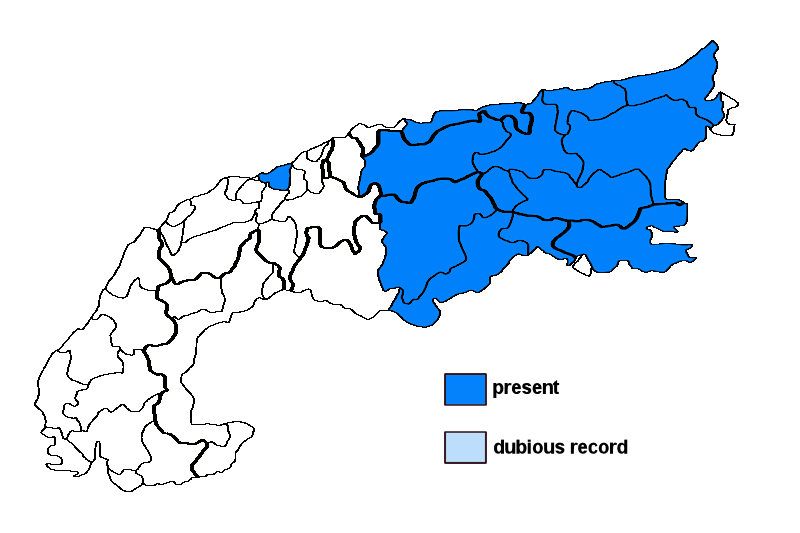Thelocarpon epibolum Nyl.
Syn.: Thelocarpon conoidellum Nyl., Thelocarpon epibolum Nyl. var. epithallinum (Leight. ex Nyl.) G. Salisb., Thelocarpon epithallinum Leight. ex Nyl.
Lichenised.
Substrate: lignum, living mosses, acidic soil (mostly on siliceous substrata), parasitic on other lichens
Altitudinal range: from the montane belt (potential vegetation: deciduous forests dominated by Fagus sylvatica and closed coniferous forests with Picea abies) to the alpine belt (potential vegetation: treeless Alpine grasslands and tundras, to the lower limit of perennial snow and the equilibrium line of glaciers)
Note: an ephemeral, facultatively lichenised species found on foliose lichens, rotting wood, decaying bryophytes, peaty soil, mostly in upland areas; overlooked, and certainly more widespread in the Alps. In the Th. epibolum-group, two taxa are commonly distinguished: the typical variety, and var. epithallinum, lichenicolous on Baeomyces rufus and purported to have longer ascospores. On the other hand, T. epibolum itself was described as lichenicolous on Solorina crocea, and in our opinion var. epithallinum is not clearly distinguishable, its spores lying in the variation range of those of var. epibolum. Kocourková maintains that the two taxa can can be distinguished by the thickness of the interascal filaments and the host selection, assuming that they are specialised in different photobionts, adding a further undescribed taxon with long spores, specialised in the Peltigera aphthosa-group. Since we have found many asci with both shorter and longer spores, we merge the two taxa.

Austria: Tirol; Salzburg; Kärnten; Steiermark; Oberösterreich; Niederösterreich (incl. Wien); Germany: Oberbayern; Switzerland: Schwyz; Italy: Friuli; Veneto; Trentino Alto Adige; Slovenia: Alpine and Pre-Alpine Slovenia;





